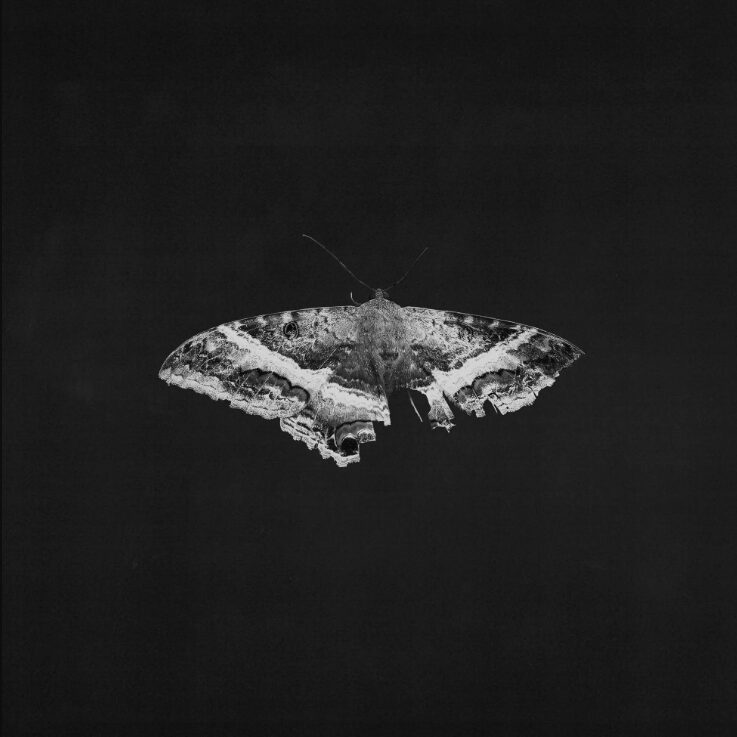Kendrick Lamar’s third album was almost called To Pimp A Caterpillar, a title that would reference an acrostic touchstone (Tu-P-A-C), but the rapper’s own metamorphosis was, by this point, more butterfly than developmental stage. To become a butterfly, a caterpillar must pupate within a chrysalis for radical transformation. Lamar’s journey had been just as dramatic, with 2011’s Section.80 and 2012’s good kid, m.A.A.d. city announcing a new and singular sensibility.
As a Gemini, duality and nuance is perhaps rooted in Lamar’s spirit, and To Pimp a Butterfly is his fullest exploration of this idea. By 2014 he was disturbed by fame, seeking something more, and after performing in South Africa, he felt compelled to stay longer, visiting several sites of interest, including Nelson Mandela’s jail cell on Robben Island. It was an experience that affected him greatly, and he focused his attention on Mandela’s message of resilience, consistency, and integrity.
In a 2016 interview, Lamar said he felt he “belonged in Africa” and To Pimp A Butterfly weaves a thread from that continent to North America, tracing ancestors’ stories, experiences, and crosscurrents. It created a space where he is both celebrating and interrogating the Black music tradition, folding in everyone from George Clinton to Robert Glasper and Terrace Martin, and Sly Stone to Flying Lotus and Thundercat. The old guard and the new guard are well represented and organically placed as if in conversation. And that’s the thing – Lamar is in conversation here – To Pimp a Butterfly is a masterclass in true communication.
Two tracks are posed as questions, ‘For Free? (Interlude)’ and ‘For Sale? (Interlude)’ referencing the interplay of art and commerce. Additionally, ‘Wesley’s Theory’ looks at Black economics partly through the prism of Wesley Snipes’ financial woes, ‘How Much A Dollar Cost’ reflects on the idea of what constitutes true wealth, excerpting a passage from Exodus 14, “A humble man is all that we ever need”; ‘Institutionalised’ is similarly preoccupied. ‘U’ is met with ‘i’, and as they circle each other, they reflect each other’s contradictions, ‘U’ the darker, more introspective, self-lacerating, but by the time we reach ‘i’, Lamar is thinking about self-acceptance.
Released during the rise of the Black Lives Matter movement, the album reflects on the African American experience, interrogating the dominance of violence and death, with ‘The Blacker The Berry’ a swaggering, scorching highlight. Reflecting on the death of Trayvon Martin among other subjects, it is adversarial to all, amplified by the additional vocal of Jamaican dancehall artist Assassin. The track wrestles with the dichotomy of Black culture in America and borrowing its title and philosophical cue from Wallace Thurman’s 1929 novel, it explores hierarchies of hate and ‘colorism’, a theme expanded on in ‘Complexion (A Zulu Love)’.
The theme of guilt rampages through the record, his own – on ‘Hood Politics’, and ‘Momma’, and the guilt that should be society’s – with ‘King Kunta’ as a particularly brilliant expression. Taking inspiration from the main character in Alex Haley’s 1976 novel Roots, ‘King Kunta’ is oppressed, yet still a king. It is about taking joy in personal responsibility, with self-respect as key, “straight from the bottom, this the belly of the beast, from a peasant to a prince to a motherfuckin’ king”. Effectively delivered, with some tight production and a sample of Ahmad Lewis’ ‘We Want The Funk’, Lamar also slips in references to two novels from the 1950’s, Chinua Achebe’s Things Fall Apart and Ralph Ellison’s Invisible Man – deftly restating the links between Africa and North America again.
The record riffs on Harper Lee’s To Kill A Mockingbird, in its title and its exploration of personal ethics. In 1966, Virginia’s Hanover School Board banned the book, finding it “immoral”. Lee wrote, “To hear that the novel is ‘immoral’ has made me count the years between now and 1984, for I have yet to come across a better example of doublethink.” To Pimp A Butterfly meets this spirit and raises it, not least on ‘Alright’ with its jazz-inflected beauty and aspirational hopes, but more so in closing composition ‘Mortal Man’. Over 12 minutes, Lamar reminds us of what he has learned, while folding in Fela Kuti’s ‘I No Get Eye For Back’. It tells us where he has been (geographically, to South Africa and then back to Compton), but also psychologically and emotionally, to a previously unmined part of himself. It is about legacy, “the ghost of Mandela, hope my flows they propel it”; dissimulation, “if the government want me dead, plant cocaine in my car, would you judge me a drug-head or see me as K. Lamar?”; and the long journey from caterpillar to butterfly, “the caterpillar goes to work on the cocoon which institutionalises him, he can no longer see past his own thoughts, he’s trapped….wings begin to emerge, breaking the cycle of feeling stagnant, finally free, the butterfly sheds lights on situations”.
He enters into an imagined dialogue with Tupac Shakur, interpolating an interview from 1994 where Shakur talks about his fatigue with the industry and America, but by keeping faith in God, the “game” and the hope that “all good things come to those that stay true”, he was still optimistic, while warning, “once you turn thirty it’s like they take the heart and soul out of a man, out of a Black man in this country”. This warning was prescient, as Shakur was murdered two years later, at only 25 years old. This ambiguous ending, with its scaffolding of free jazz is powerful, making us all complicit – in the past and the future.
To Pimp A Butterfly is an incendiary piece of work, with Lamar examining himself as well as his environment, and America as a whole. When it arrived it shifted things, and three years later he won the Pulitzer Prize for 2017’s DAMN., the first artist outside of the classical and jazz genres to do so. The philosopher John Dewey wrote in his 1927 book The Public And Its Problems, “The local is the ultimate universal, and as near an absolute as exists”, To Pimp a Butterfly radiantly embodies that statement.
To Pimp A Butterfly (10 Year Anniversary Edition is out today)




